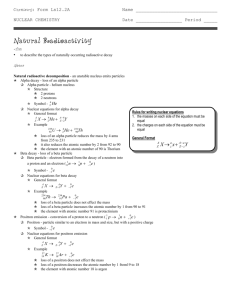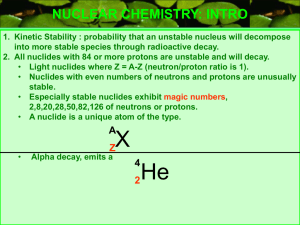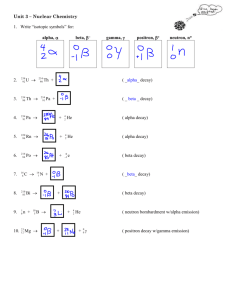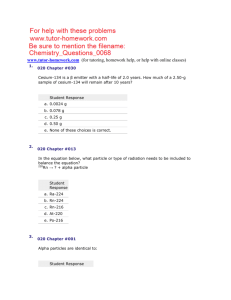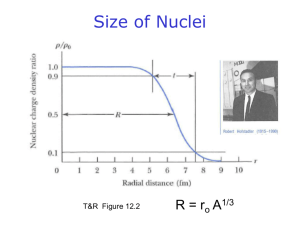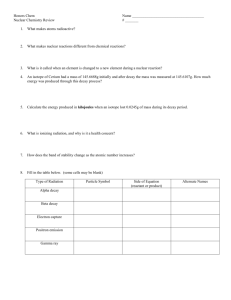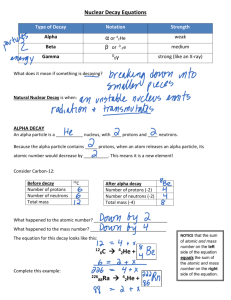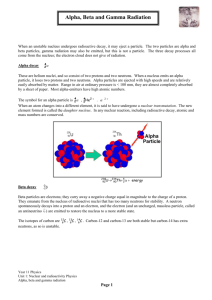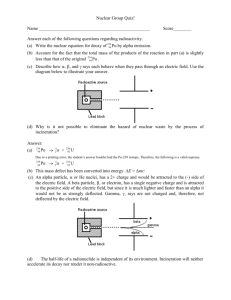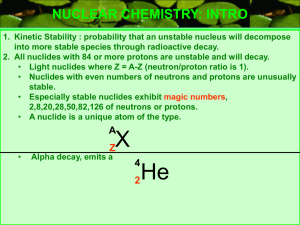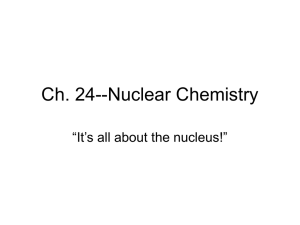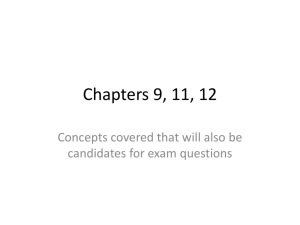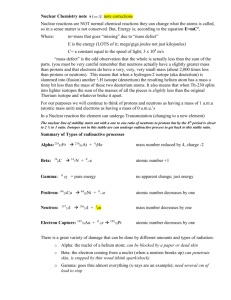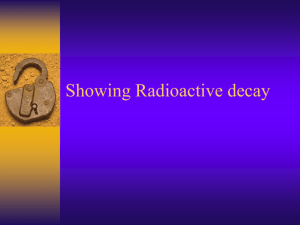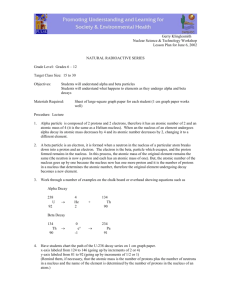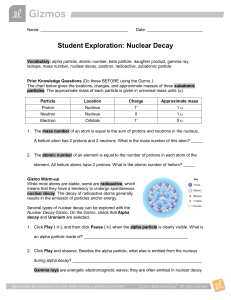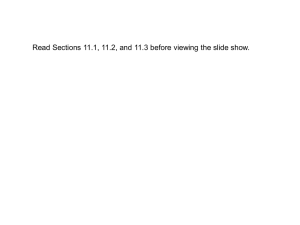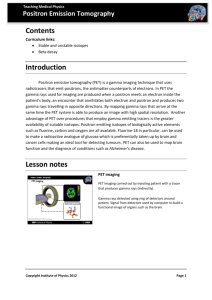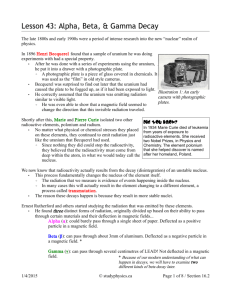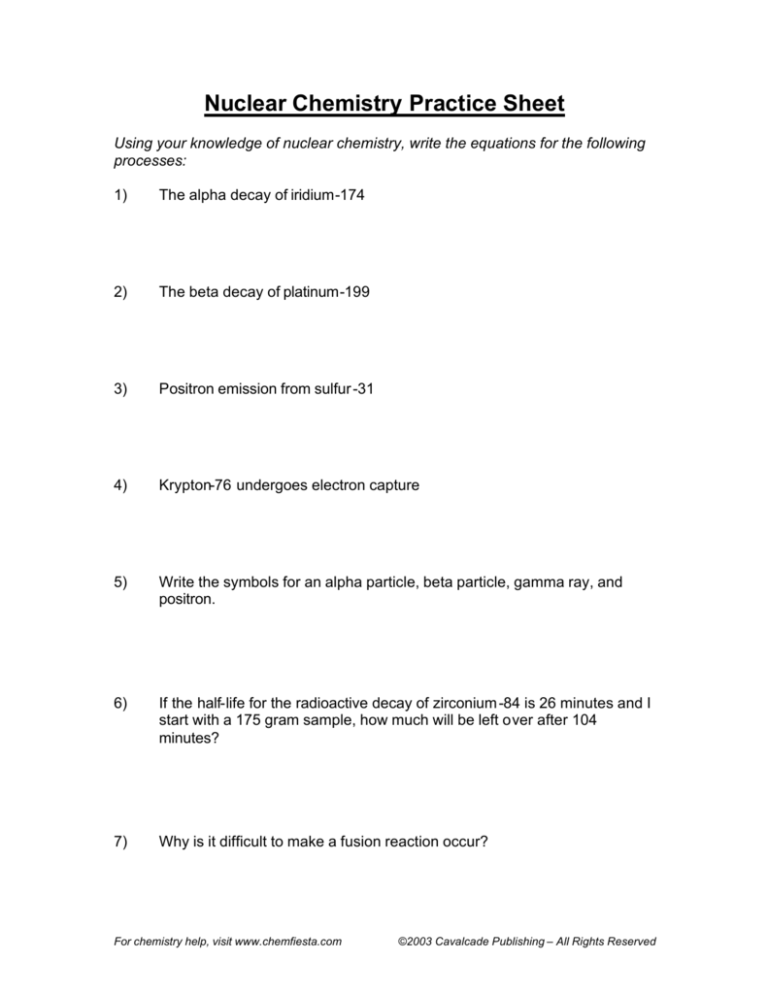
Nuclear Chemistry Practice Sheet
Using your knowledge of nuclear chemistry, write the equations for the following
processes:
1)
The alpha decay of iridium-174
2)
The beta decay of platinum-199
3)
Positron emission from sulfur -31
4)
Krypton-76 undergoes electron capture
5)
Write the symbols for an alpha particle, beta particle, gamma ray, and
positron.
6)
If the half-life for the radioactive decay of zirconium -84 is 26 minutes and I
start with a 175 gram sample, how much will be left over after 104
minutes?
7)
Why is it difficult to make a fusion reaction occur?
For chemistry help, visit www.chemfiesta.com
©2003 Cavalcade Publishing – All Rights Reserved
Nuclear Chemistry Practice Sheet – Solutions
1)
The alpha decay of iridium-174
174
77
2)
Ir → 24 He +170
75 Re
The beta decay of platinum-199
199
78
3)
Pt → −01 e +199
79 Au
Positron emission from sulfur -31
31
16
4)
Krypton-76 undergoes electron capture
76
36
5)
S →1531P + +01 e
Kr + −01 e→3576Br
Write the symbols for an alpha particle, beta particle, gamma ray, and
positron.
Alpha particle (a) = 24 He
Beta particle (ß) = −10 e (it’s the same as an electron!)
Gamma ray (?) = 00γ
Positron =
6)
0
+1
e
If the half-life for the radioactive decay of zirconium -84 is 26 mi nutes and I
start with a 175 gram sample, how much will be left over after 104
minutes?
Since 104 minutes is equal to four half-lives, the amount of zirconium
left over will be:
4
1
175 = 10.9 grams
2
7)
Why is it difficult to make a fusion reaction occur?
A huge amount of energy is required to make fusion reactions occur
– typically on the order of 5 x 107 K. Since that kind of energy isn’t
just kicking around all over the place, fusion reactions aren’t that
common.
For chemistry help, visit www.chemfiesta.com
©2003 Cavalcade Publishing – All Rights Reserved


